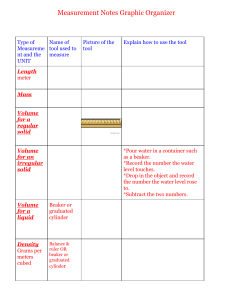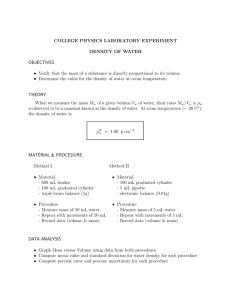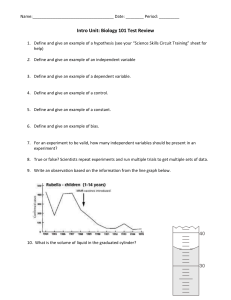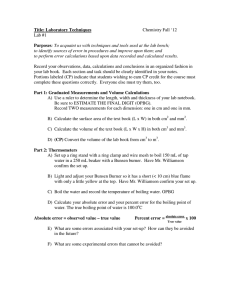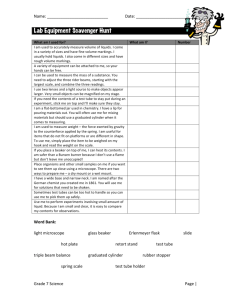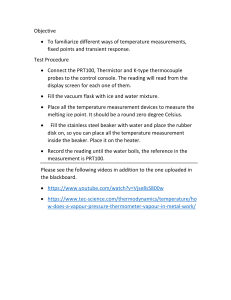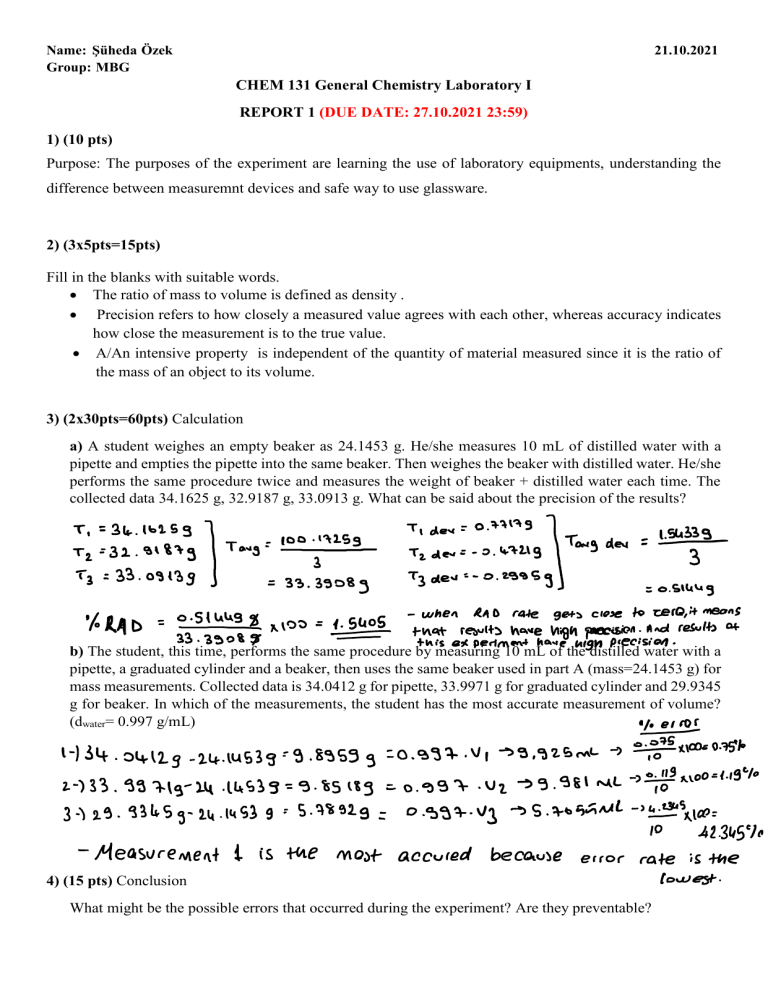
Name: Şüheda Özek Group: MBG 21.10.2021 CHEM 131 General Chemistry Laboratory I REPORT 1 (DUE DATE: 27.10.2021 23:59) 1) (10 pts) Purpose: The purposes of the experiment are learning the use of laboratory equipments, understanding the difference between measuremnt devices and safe way to use glassware. 2) (3x5pts=15pts) Fill in the blanks with suitable words. The ratio of mass to volume is defined as density . Precision refers to how closely a measured value agrees with each other, whereas accuracy indicates how close the measurement is to the true value. A/An intensive property is independent of the quantity of material measured since it is the ratio of the mass of an object to its volume. 3) (2x30pts=60pts) Calculation a) A student weighes an empty beaker as 24.1453 g. He/she measures 10 mL of distilled water with a pipette and empties the pipette into the same beaker. Then weighes the beaker with distilled water. He/she performs the same procedure twice and measures the weight of beaker + distilled water each time. The collected data 34.1625 g, 32.9187 g, 33.0913 g. What can be said about the precision of the results? b) The student, this time, performs the same procedure by measuring 10 mL of the distilled water with a pipette, a graduated cylinder and a beaker, then uses the same beaker used in part A (mass=24.1453 g) for mass measurements. Collected data is 34.0412 g for pipette, 33.9971 g for graduated cylinder and 29.9345 g for beaker. In which of the measurements, the student has the most accurate measurement of volume? (dwater= 0.997 g/mL) 4) (15 pts) Conclusion What might be the possible errors that occurred during the experiment? Are they preventable? Erros could be from the insturments that used in the experiment, environment, person or procedure. In the experiment pipette, graduated cylinder and beaker used and these instruments could be used inaccurate. While measuring weight of beaker, balanced used and the enviroment that balanced used could be windy or even people around it might be effected the result. Also observed result in graduated cylinder and pipette could be different than the real value. Some of these errors are preventeble. For example, if the room was windy or there were a lot of people around the balance, we can surround the beaker with something that is going to prevent the bad conditions which are effect the result or most people can leave that area. If it is because of the way measurments read, it can be read over again or some other people can read the result and then they can compare the results. If it is a instrumental error it can not be preventeble because there if there is soemthing wrong with the instruement, it is going to show the same wrong result.
